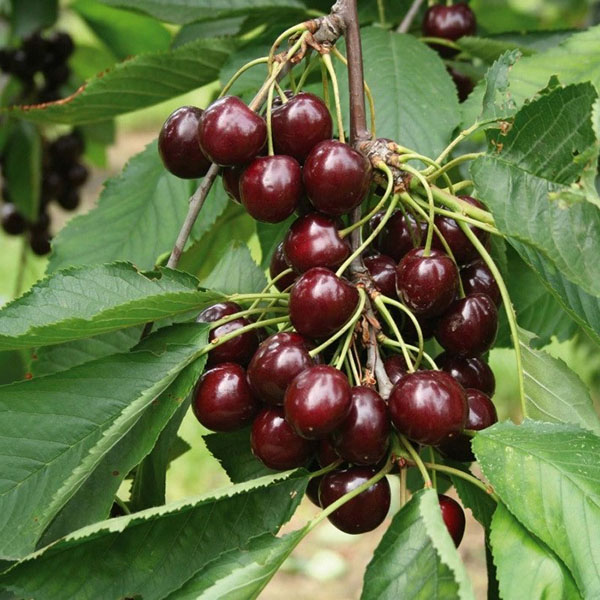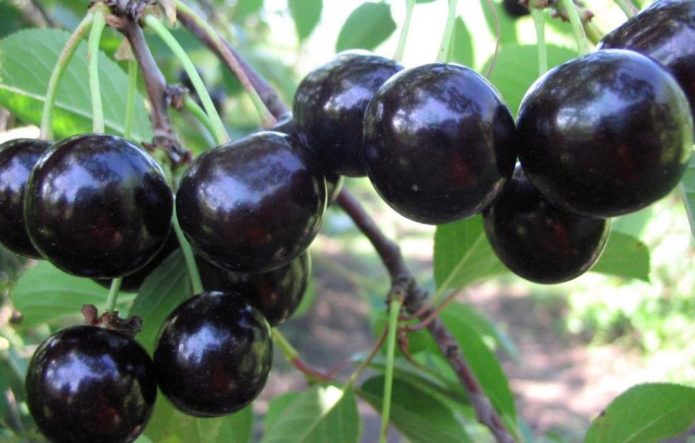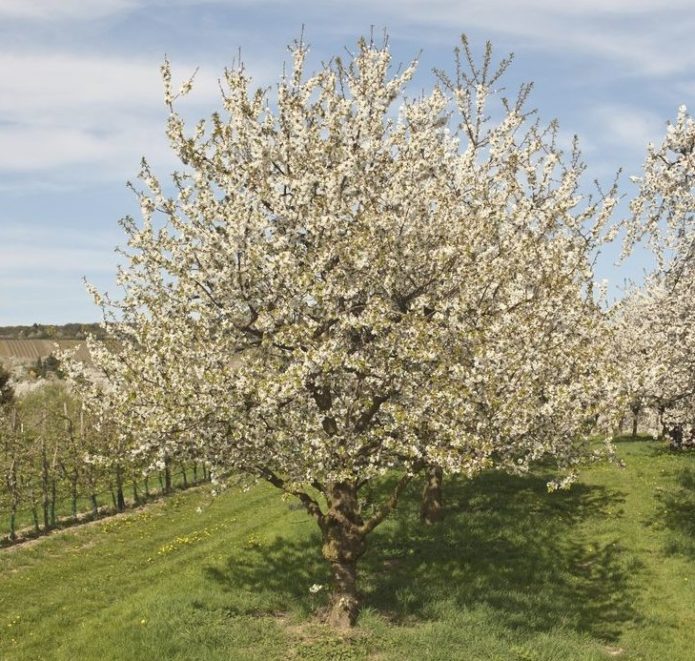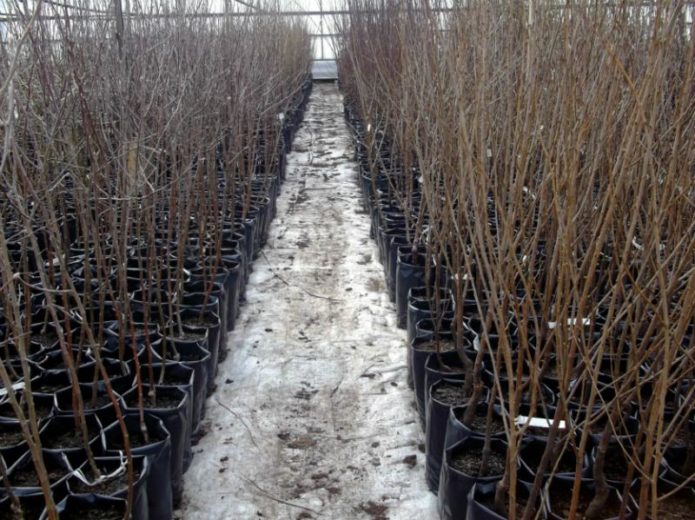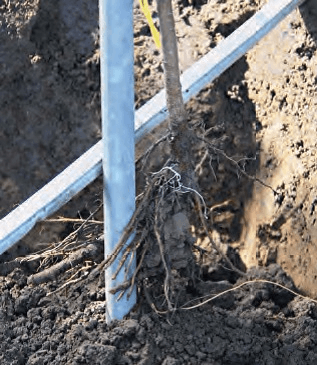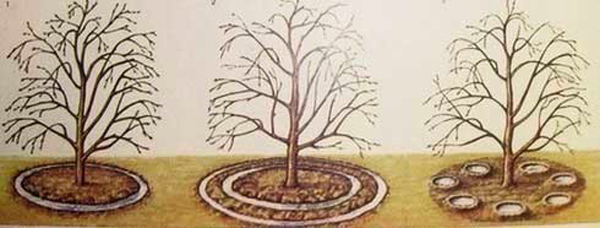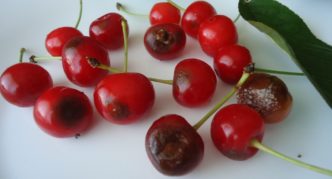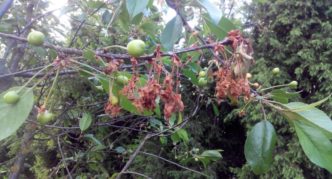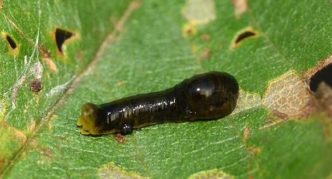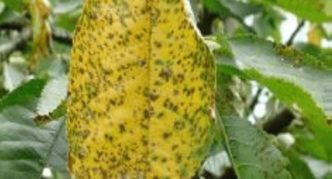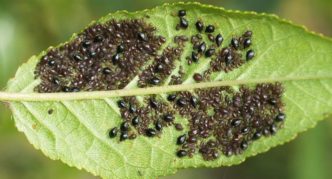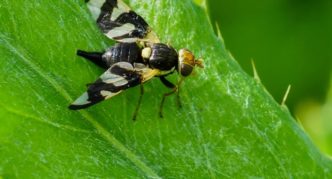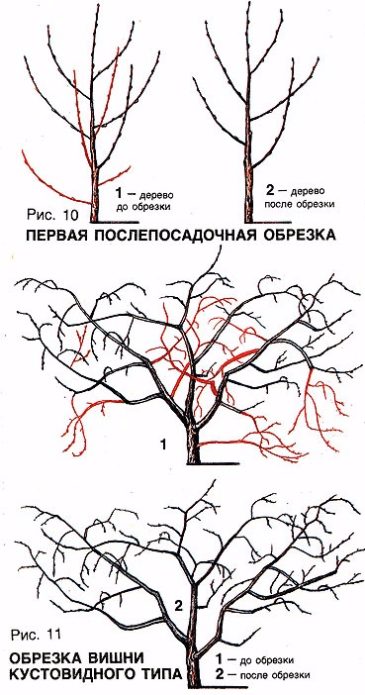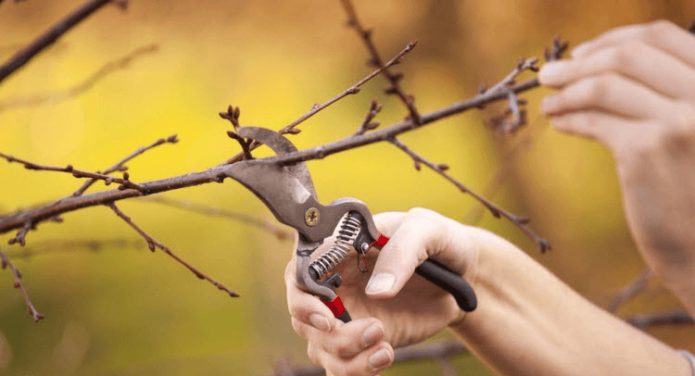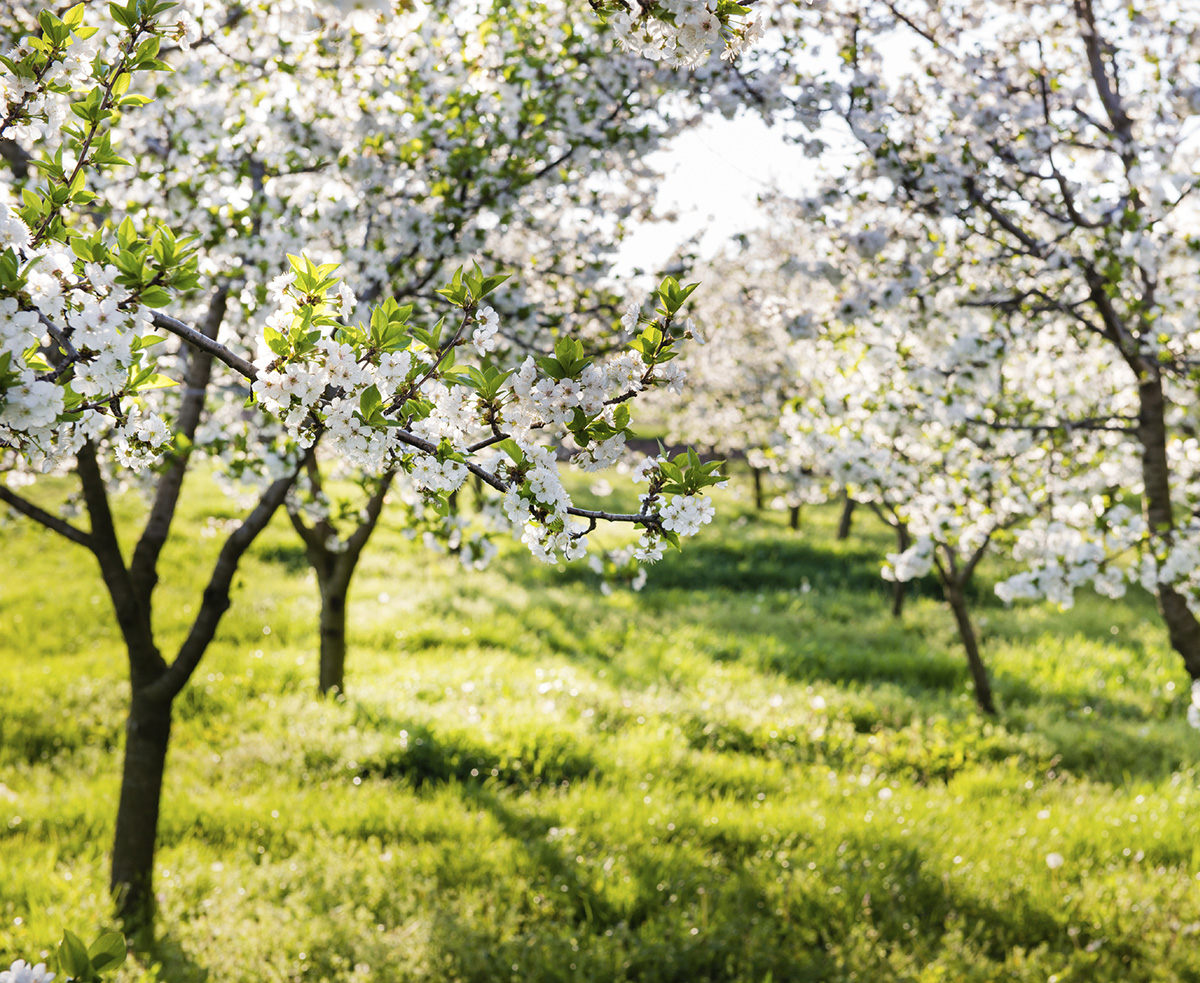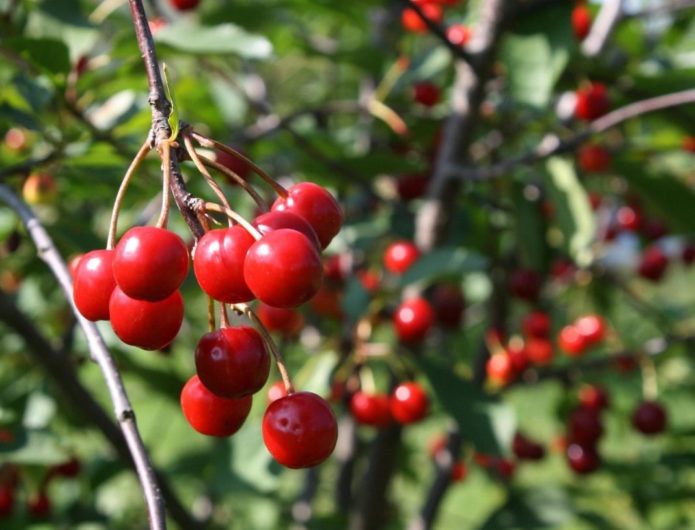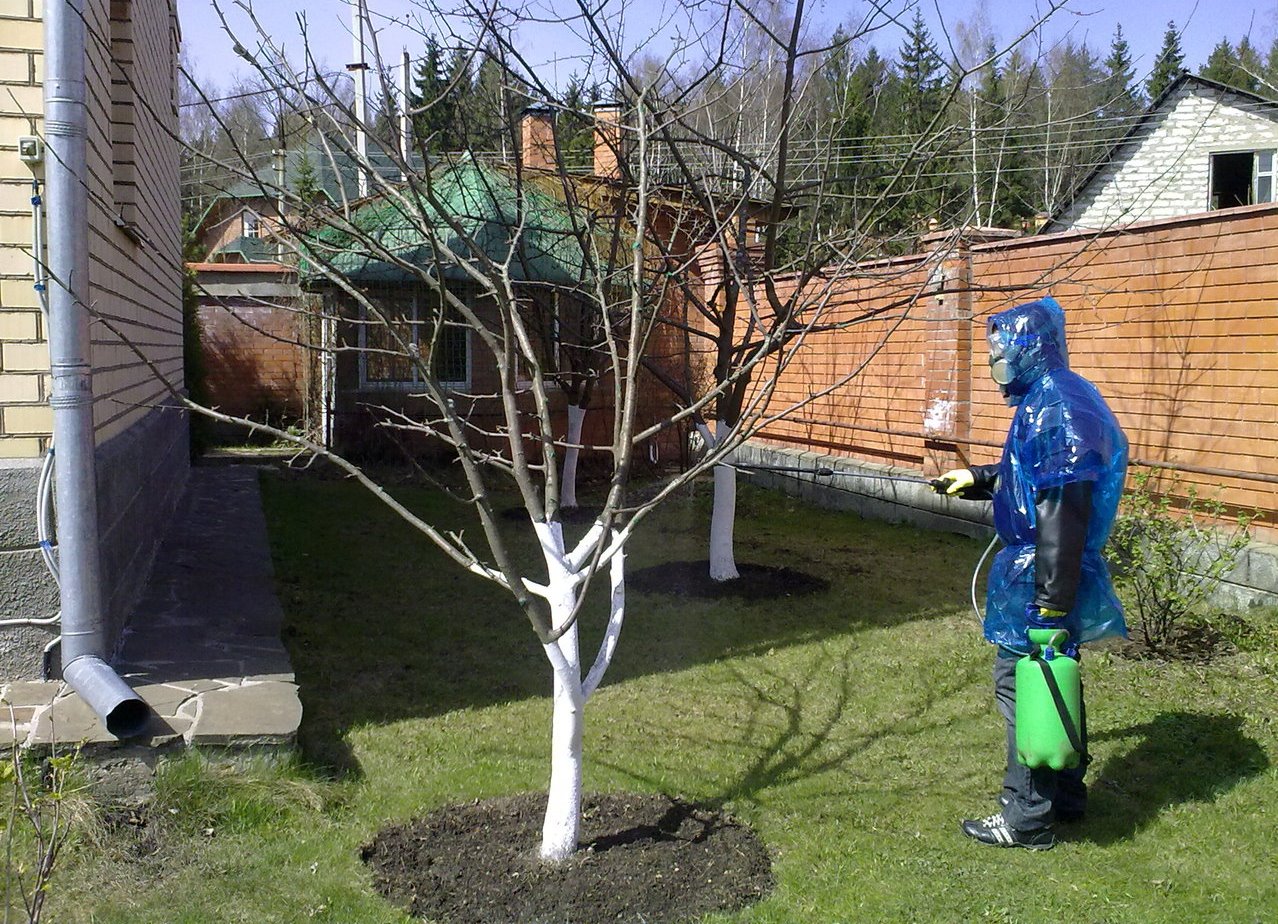Cherries are successfully grown in various soil and climatic conditions in Russia, Ukraine, Belarus. This culture is distinguished by good winter hardiness, early maturity, annual yield, early ripening of tasty and healthy fruits. Cherry trees are very decorative and are good honey plants. One of the modern and promising varieties is Shokoladnitsa.
Content
The history of the origin of the variety Shokoladnitsa
Cherry variety Shokoladnitsa was bred more than 20 years ago by specialists from the Oryol branch of the All-Russian Research Institute of Breeding of Fruit Crops by crossing two dwarf varieties: Lyubskaya cherry and Cherry-cherries Consumer goods black. In 1996, the variety was included in the State Register of Breeding Achievements of Russia. The name of the variety was determined by dark burgundy with brownish shade fruit color and their high taste.
Shokoladnitsa was zoned for cultivation in the Central and Central Black Earth regions of Russia (in Moscow, Ryazan, Smolensk, Tula, Bryansk, Vladimir, Ivanovo and Kaluga regions).
Description of cherry varieties Shokoladnitsa
Cherry Shokoladnitsa belongs to medium-sized varieties. The height of the tree usually does not exceed 1.8–2.5 m. Each year the seedling grows 60–70 cm in height and reaches its maximum height by 3–4 years.
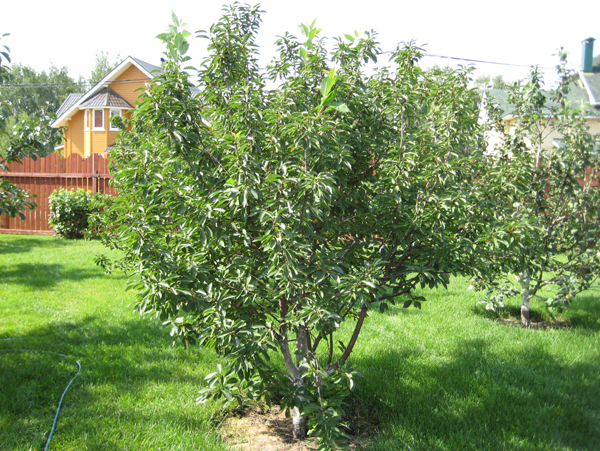
A low and compact tree Shokoladnitsy takes up little space on the site and is a decoration of the garden
The cherry root system is very developed and consists of the main (vertical) roots and additional (horizontal) ones formed by young shoots. The depth of the vertical roots is 2 to 4 m. However, the bulk lies close to the surface, at a depth of 0.5–0.75 m. This property must be taken into account in soil cultivation and irrigation.
The crown of the tree is spreading, in shape close to an inverted pyramid. Differs in compactness and medium density of branches. The arrangement of the branches is straight up, so they do not fall to the ground under the weight of the fruits. The trunk and branches of the cherry are brownish, young shoots are light green in color. Leaves are conical, matte, dark green.
Shokoladnitsa blooms in early to mid-May, depending on the growing region and weather conditions. Flowering lasts 2-3 weeks. Umbrella inflorescences are rather large, each with 3-4 white-pink flowers.
Cherry ripens by mid-July. The first harvest of fruits can be obtained within 4 years after planting. 10–12 kg of cherries are harvested from one adult tree.Fruits are large, dark burgundy in color, with a dense skin, weighing an average of 3.5–4 g. The pulp is of medium density, juicy and aromatic. The bones are well separated from the fetus. The cherry of this variety is superior in taste to many similar varieties. The taste of the fruit is sweet with a slightly noticeable sourness (sugar content is 12%). Light bitterness in the taste reminds that Shokoladnitsa is a quarter of a cherry.
Chocolate girl is a source of substances useful for the body, including elements that improve blood composition: copper, cobalt, iron. Cherry fruits are considered a dietary product; they are recommended even for people with digestive problems. And cherry juice will perfectly quench your thirst and increase your appetite.
Advantages and disadvantages of the variety
The main advantages of the Chocolate Cherry:
- frost resistance (up to -35 ° C);
- drought resistance;
- high stable yield;
- early maturity and regular fruiting;
- taste and dietary qualities of fruits;
- self-fertility.
Main disadvantages:
- susceptibility and weak resistance to fungal infections (coccomycosis and moniliosis);
- short term of productive fruiting - 15-17 years.
Cherry planting
Before you start planting cherry seedlings, you need to choose a place where the trees will grow for the next 15-20 years. The space should be free of steep slopes and lowlands, in which water and cold damp air can accumulate, well-lit, sunny, open, since even a light shade badly affects the yield and quality of the fruit. It is recommended for planting to choose the southern or southwestern part of the site with the protection of young trees from cold winds (this can be a fence or outbuildings).
The groundwater level should not exceed 1.2–1.5 m.
The soil
All stone fruits, including Shokoladnitsa cherry, grow well and develop on loose soils (sandy loam and loam) with sufficient aeration. If the soil on the site is heavy, "clogged", it must be lightened by adding peat or sand. Before planting, you should also pay attention to the acidity of the soil (pH). For growing cherries, it should be in the range of 6.5–8.5.
If the soil is acidic, add wood ash (700–800 g / 1 m²) to it before planting.
Time
For planting Shokoladnitsa seedlings, both spring and autumn periods are suitable. In the southern regions, the beginning of autumn is considered the most optimal. In temperate regions, planting is best done in mid-April. Seedlings prepared for planting should be healthy, with elastic elastic branches and a developed root system. The optimum plant height is about 70 cm.
The distance between the trees should be at least 2.5 m, and between the rows - at least 3.5 m. After marking the site, pits are prepared for planting. For fertile soil, the size of the pit is 70x70 cm, the depth is 40-60 cm.
If the soil is poor, not fertile enough, then the size of the hole should be increased by 50%.
Step by step planting process:
- Dig a hole of the required size. In this case, roll the top fertile layer of earth (about 20 cm) to the edge of the pit.
- Mix organic and mineral fertilizers evenly in the composition: 2-3 buckets of rotted manure or compost, 1 kg of wood ash, 100 simple superphosphate, 80 g of potassium sulfate per pit.
- Loosen the bottom to a depth of 8-10 cm and moisten the soil with 10 liters of water at room temperature.
- After the water has been absorbed, lay the mineral-organic substrate and soil from the arable layer into the pit in layers. Fill the hole no more than 2/3. After that, mix the entire soil mixture thoroughly and slightly compact.
- Drive the future support of the seedling firmly into the center of the hole - a stake 5–7 cm in diameter and 130–150 cm long.This must be done just before planting the seedling, and not vice versa.
- Form a small mound of soil around the support.
- Before planting a seedling, you need to cut off all broken, rotten and moldy roots.
- Place a rail across the pit. Lean the seedling against the support in such a way that the grafting site, which externally stands out with a small bend of the stem, is 5–8 cm above the soil surface.
- Gently spread and spread the roots of the seedling down the mound.
- Gradually cover the roots with the remaining soil from the dump, periodically compacting it.
- When the roots are about 15 cm covered with soil, it is necessary to water the tree abundantly with water and fill the hole with earth to the top.
- Mulch the soil around the seedling with peat or humus with a layer of about 10 cm.
- Gently tie the planted tree to the support.
Pollinators
Shokoladnitsa belongs to self-fertile (self-pollinated) varieties, i.e. fruit ovary is formed even when growing one tree. However, experienced gardeners came to the conclusion that cherries growing next to her or other varieties of sweet cherries contribute to an increase in yield. It is most effective to use Turgenevskaya, Vladimirskaya, Lyubskaya, Sklyanka cherries, as well as Griot cherries, which bloom simultaneously with Shokoladnitsa, as pollinators.
For the regions of the Urals and Siberia, the Ural ruby cherry is used as a pollinator.
Video: how to plant cherries correctly
Features of growing and caring for cherries of the Shokoladnitsa variety
For normal development and sustainable fruiting, the tree needs regular watering, periodic feeding and maintaining the crown in proper condition by pruning.
Watering
For proper watering, two shallow furrows are formed: one at a distance of 0.5 m from the trunk, the second at 0.5 m from the first. Pour 30-40 liters of water under one tree.
Watering is done before sunrise or after sunset. When all the moisture is absorbed into the soil (after about half an hour), the surface of the earth around the tree is loosened and mulched with peat, sawdust or compost. As a rule, in just a season, four abundant watering is required: during the fruit set, at the end of June, about 2 weeks before the fruits fully ripen and 1–1.5 months before the expected frost (winter watering).
In case of rainy and cold summers, watering is adjusted according to the weather.
Top dressing
If, when planting seedlings, the planting pits were prepared correctly (with the introduction of all the necessary fertilizers), then during the next 2-3 years fertilization can be omitted. In the process of feeding cherries, the soil is loosened in the trunk circle. This is done so that the tree's root system can get enough air. Under young seedlings, the soil is loosened at least once a week. It is also necessary to thoroughly clean the space under the cherries from weeds and prevent their reproduction.
Table: mineral and organic fertilizers used to feed cherries
| Period feeding | Root feeding (in the trunk circle) | Foliar top dressing (spraying) | ||||
| mineral fertilizer | organic fertilizer | mineral fertilizer | organic fertilizer | |||
| The amount of fertilizer per tree | ||||||
| March- April | urea up to 25 g per 1 m² | — | rotted compost (manure) 5–8 l | — | — | — |
| Start june | — | — | — | — | urea 15 g for 5 liters of water | — |
| Middle june | plain superphosphate 250 g for 35 l of water | potassium chloride 150 g in 35 l of water | — | — | — | wood ash 1 tbsp. for 1 liter of water |
| September | simple superphosphate 75 g | potassium chloride 30 g | rotted compost (manure) 3-4 kg / 1 m² | wood ash 1 l / 1 m² | — | — |
Preparing cherry trees for winter
Preparation for cold weather includes several stages:
- in the fall, after leaf fall, the trunk circle must be cleaned of weeds, fallen leaves, and residues of plant debris.The soil should be well loosened and covered with mulch with a layer of 5–7 cm. A mound of humus or crushed peat should be poured around the trunk;
- the trunk is whitewashed with an aqueous solution of slaked lime to the point where branching begins. This will scare off rodents who like to feast on the wood of fruit trees. To enhance the effect, stationery glue and copper sulfate are added to the whitewash composition;
- then the base of the trunk is wrapped with any breathable material in several layers (burlap, covering material for beds);
- when snow falls, it is scooped up to the tree, forming a snowdrift. As it subsides, it is updated several times during the winter;
- young seedlings can be put on a cardboard box of a suitable size, filling the empty space inside with wood chips, straw, crumpled paper.
Diseases and pests of cherries
With all the high qualities of Shokoladnitsa cherries, the predisposition of trees to fungal infections with coccomycosis and moniliosis is a rather serious drawback of the variety.
Table: diseases and pests of cherries Shokoladnitsa
| Illness or pest | External manifestations | How to deal with the problem |
| Coccomycosis | From above, the leaf plate is covered with small dots, from below - with a continuous thin layer of pink bloom, similar to a cobweb. Then the affected leaves turn yellow, dry and fall off. |
|
| Moniliosis | Branches and leaves turn black, as if they were on fire. Then these areas are covered with small olive-colored bumps. On fruits - similar growths, only grayish-black. Affected cherries quickly rot and crumble. |
|
| Anthracnose | Lighter areas appear on green cherries, which, after a few days, transform into brown spots covered with a bloom of pink. In dry weather, such cherries dry quickly, in rainy weather they rot. |
|
| Scab | On the leaves and berries, rapidly growing spots of a marsh or brown color appear, slightly rough to the touch. Then their surface is covered with cracks. |
|
| Slimy sawfly | Leech-like larvae “scrape off” tissue from the upper side of the leaf plate. Leaves dry and fall off. Then the sawfly switches to berries, damaging the skin. | In case of mass defeat (larvae damaged one leaf out of 10 or more), insecticides are used - Fufanon, Kemifos. In less severe cases, they manage with a solution of sodium chloride or baking soda (30 g per 1 liter of water). |
| Leaf aphid | Small insects of lime, pale green or black-brown hue settle on the tops of the shoots, sucking the juices from the young foliage. The leaves curl up into a tube, turn brown, fall off. |
|
| Cherry fly | The greatest harm is caused by the larvae eating the flesh of cherries from the inside. The fruits turn brown, become watery, and acquire an unpleasant odor. |
|
Photo gallery: diseases and pests threatening cherries
- With anthracnose, cherries quickly rot
- With moniliosis, the branches look like they were scorched by fire.
- Slimy sawfly damages leaves and fruits
- With coccomycosis, the leaf plate is covered with small dots
- Aphids suck juice from young shoots and leaves
- The cherry fly lays the larvae that devour the fruit
Cherry crown formation Shokoladnitsa
For the full development of trees and obtaining stable high yields, the cherry crown must be properly formed. Cherry pruning is divided into formative, thinning, rejuvenating and sanitary.
Formative and thinning pruning of cherry trees is carried out in early spring, in March-April, before bud break and the beginning of sap flow. However, at negative air temperatures, you should refrain from cutting. The purpose of the procedure is to stimulate the tree to actively grow new shoots. To do this, the side branches are cut to a third of the length. 3-4 of the strongest branches are shortened to the last well-developed branch growing upwards at a slight shoot angle. The minimum length of branches to be pruned should be about 55-60 cm. Very short branches are not touched.
A young cherry seedling is pruned immediately after planting. The side branches are shortened by about a third. In this case, the main shoot should be 10-15 cm higher than the growth point of the upper of the lateral ones.
With an optimal annual growth of about 30-40 cm in varieties of bush cherries, only thinning is usually carried out with cutting branches per ring. It is not recommended to shorten annual branches, as this will lose a lot of generative buds.
The purpose of sanitary pruning of cherries is to remove old, dry, dead, broken and diseased branches, as well as those directed towards the inside of the crown or intertwined with each other. Sanitary pruning can be done both in early spring and in the fall after harvest. Unnecessary branches should be cut as close to the growth point as possible without leaving any "stumps".
To avoid damage to the branches and their subsequent disease, all pruning operations should be performed with clean, well-sharpened garden tools. Sections must be carefully processed with garden varnish, cinnabar or oil paint.
Since the variety Shokoladnitsa gives abundant root growth, it must be removed by cutting off the shoots as close to the roots as possible.
Video: pruning cherries
Reviews
I really love Shokoladnitsa cherry because it is very convenient to make cherry jam from its dark, almost black berries. The stone is perfectly separated from the pulp and the berry is neat and not deformed. And her taste is pleasant, not sour "pluck out your eyes", but closer to sweet. It is quite possible to eat even raw. The tree tolerates winter quite comfortably, does not require additional shelter, but it is susceptible to some diseases. Coccomycosis and moniliosis have a bad effect on her. But now there is a large amount of fertilizers and medicines for plants, I use Horus and have forgotten about cherry diseases. Best of all, Shokoladnitsa grows on not too wet soils, in sunny, not particularly ventilated places, so it makes sense for residents of arid and calm areas to pay close attention to this variety.Also, the tree requires regular pruning and the formation of the trunk, and young shoots nearby must be removed without fail, otherwise it can turn into a shrub and run wild. The variety is self-fertile, but the cherry of the Vladimirsky variety growing nearby increases the yield impressively, that is, the re-pollination is beneficial to Shokoladnitsa.
Shokoladnitsa is a partially self-fertile variety. A pollinator is required to increase yields. As pollinators for Shokoladnitsa, you can use Turgenevka, Studencheskaya, Lyubskaya and other varieties that coincide with Shokoladnitsa in terms of flowering.
A small tree up to 2–2.5 m, self-fertile, medium ripening, self-rooted. The berries are about 3.5 g, almost black. Tasting score - about 4 points. The stone is rather large. Advantages: winter hardiness, productivity, self-fertility. Disadvantages: susceptibility to coccomycosis and moniliosis. Out of 5 twigs-seedlings bought under the name Shokoladnitsa, two have taken root.
The best survival rate and high yield of the cherry Shokoladnitsa demonstrates at home - in the central region of Russia. But, if you choose the right place, prepare the soil and properly care for the crop, then you can get good harvests in other areas.
